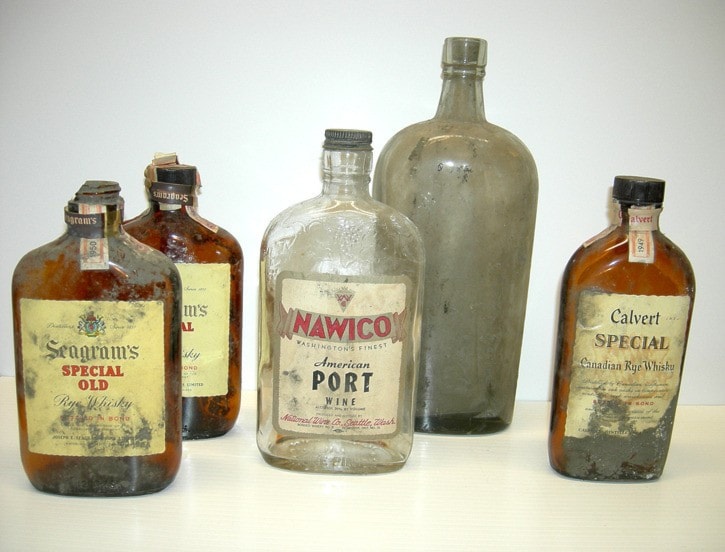There’s a definite hangover from the past around the latest find at the White Rock Museum and Archives.
Kelvin Fauth, superintending the KVS Construction crew working on the current renovation of the museum – formerly Great Northern Railway’s historic White Rock station – wasn’t expecting to find a stash of beer and liquor bottles in the wall of the building near the old boiler room.
But that’s exactly what he found Jan. 6, according to museum collections and exhibits co-ordinator Camille Owens – who says yesterday’s trash often opens a window on the past far more fascinating than the formal ways we memorialize it.
And though she’s joking when she says the collection of 60-year-old empties will get pride of place in the new museum’s permanent collection, she’s been treating the find like any other artifact – cleaning it and taking precautions to preserve another item found with it, which seems to be an engineer’s style silk-lined woolen cap.
“It’s hard to tell whether its a black cap or a grey cap – it’s so dirty,” she said. “I put it in the fridge to stop the bugs from coming out of it.”
She noted the find includes cans and bottles of U.S. origin, including Schmidt Beer Cans, Carling Pilsner Old Style and Hart’s Western Style brown “stubby” bottles, plus mickey-sized bottles that once held Calvert’s Rye Whiskey, Seagram’s products and Nawico Port.
All of the bottles seem to date from the 1949-51 period, Owens said, and were accompanied by two documents from the same period – a baggage tag from the Crown Zellerbach mill in Ocean Falls, B.C. and a pager of names of senior customs officials from 1954.
“The building also housed the customs office at that time,” community historian Hugh Ellenwood noted.
Owens said there are two theories about how the bottle got into the wall of the building, which was moved closer to Marine Drive from its original trackside location in 1984.
“One is that it was an informal time capsule of sorts,” she said.
“The other is that the boiler room was a gathering spot at lunchtimes for train people.”
It’s possible, Owens acknowledged, that a trip to the boiler room at the station in hard winters during the late 1940s and early 1950s wasn’t only about refueling the boiler.
But she said the labels of the bottles and cans have an undeniable period charm, even down to what would now be considered stereotypical Northwest imagery of First Nations canoes and tepees.
“Whether they were meant to be or not – they are a little time capsule,” she said.
